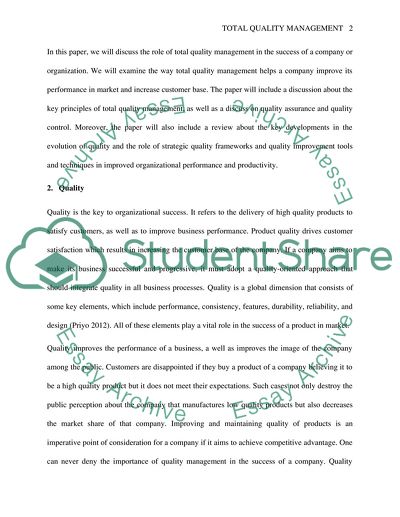Cite this document
(“TOTAL QUALITY MANAGEMENT (TQM) Essay Example | Topics and Well Written Essays - 4250 words”, n.d.)
Retrieved from https://studentshare.org/miscellaneous/1609079-total-quality-management-tqm
Retrieved from https://studentshare.org/miscellaneous/1609079-total-quality-management-tqm
(TOTAL QUALITY MANAGEMENT (TQM) Essay Example | Topics and Well Written Essays - 4250 Words)
https://studentshare.org/miscellaneous/1609079-total-quality-management-tqm.
https://studentshare.org/miscellaneous/1609079-total-quality-management-tqm.
“TOTAL QUALITY MANAGEMENT (TQM) Essay Example | Topics and Well Written Essays - 4250 Words”, n.d. https://studentshare.org/miscellaneous/1609079-total-quality-management-tqm.


